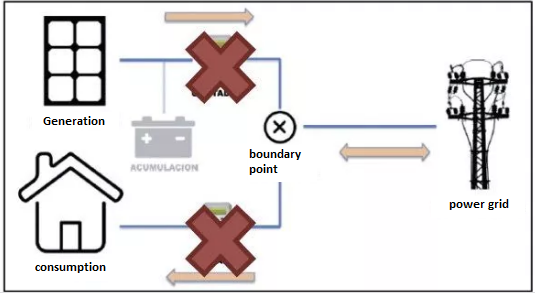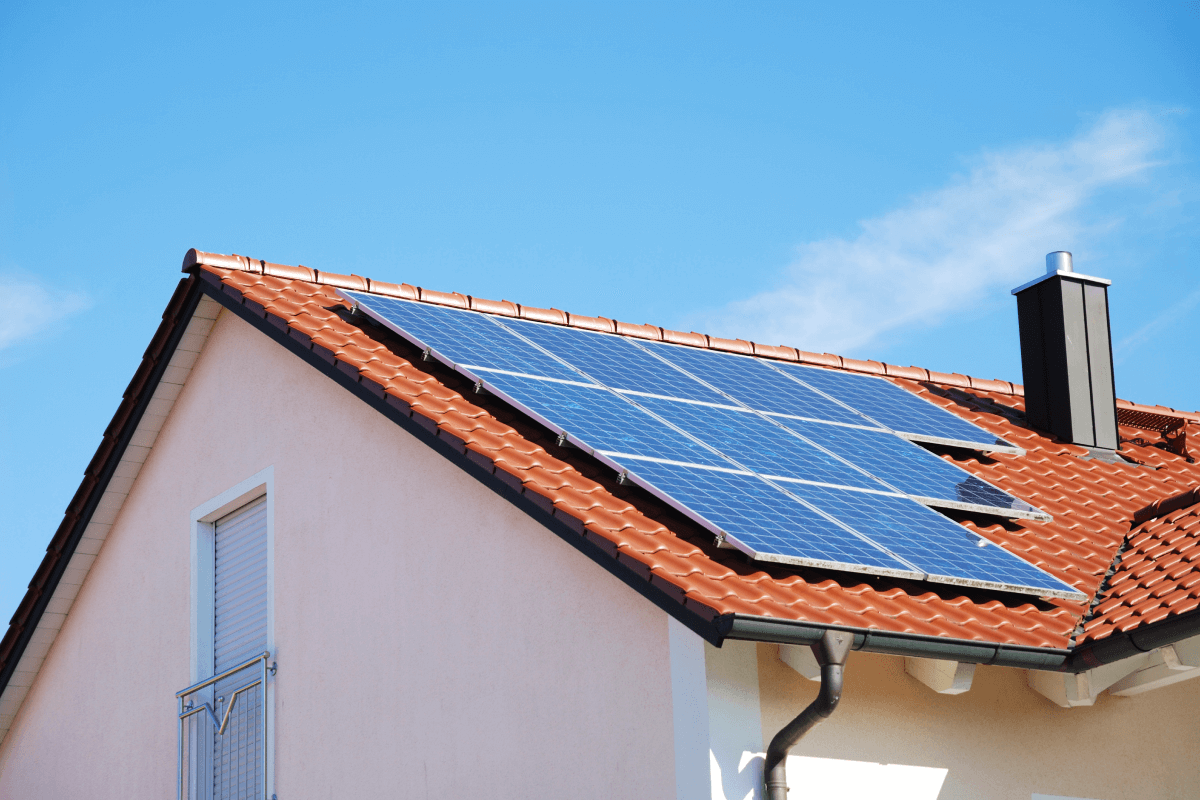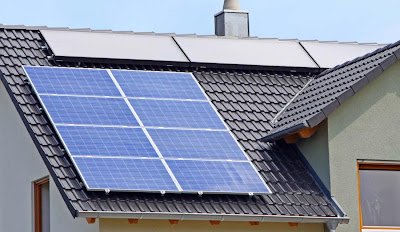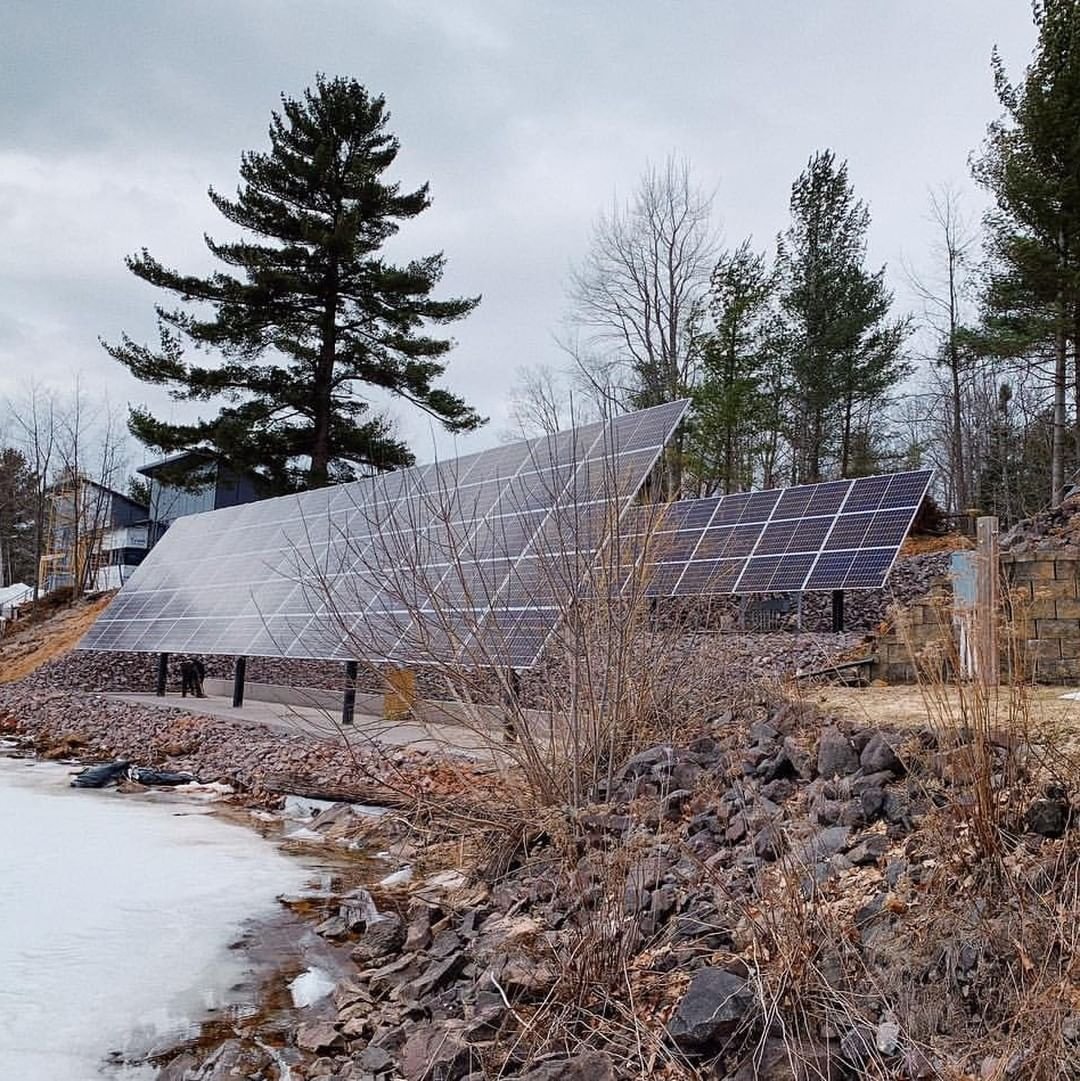
Photovoltaic Self-consumption with Solar Panels
In this article we will talk about photovoltaic self-consumption with solar panels. I explain everything you need to know about this topic.
Installing solar panels for self-consumption on your roof implies a more sustainable world and generating electricity for your own consumption and thus saving on the electricity bill. But for this it is important to know how it works, and what requirements this type of facilities have.
Photovoltaic Self-consumption with Solar Panels
Here you will find answers to those questions about self-consumption that we hope will help you.
The photovoltaic own consumption , could be defined as: “a system of generating electrical energy from solar energy for energy savings” . And since 2019, installing solar panels to have a “solar roof” is already legal, without a “sun tax” and profitable.
In colloquial language, it is the same concept as if you have a wood stove in your house, which generates heat to heat the house. Well, a photovoltaic installation for self-consumption , instead of generating heat, generates electricity through photovoltaic solar panels, thanks to sunlight, to be able to feed the electrical equipment in your house and allows you to save on your electricity bill .
And all this without having to disconnect from the grid, your home will get electricity from your solar self – consumption system or from the electricity grid, as needed at all times and you contribute to the fight against climate change.
What requirements must be met to install solar panels for self-consumption?
Taking into account that the current legislation is no longer a problem, the fundamental requirement to be able to install solar panels for self-consumption is to have a roof or land where they can be located. But in a house or building, it is normal to use the roof.
This roof must meet certain minimum requirements to be able to carry out an adequate installation:
The roof must be in good condition
When installing the solar panels, a structure will have to be placed by drilling the roof and it must also be able to support the weight of the group. Therefore, the good condition of the cover should always be verified with a professional.
Roof orientation:
It is essential to choose the face or faces of the roof that have the best orientation. The further south the plates are oriented, the more solar energy they will receive and the better performance you will get.
In case of having to use more than one water from the roof, the ideal is the use of optimizers or inverters with different inputs.
Avoid shady areas:
Shadows are one of the greatest enemies of solar panels. When a panel is shaded, even a small part, it can mean the total loss of production, and this affects the entire chain of panels to which it is connected in series.
Therefore, you should always try to avoid shadow situations, and when it is not possible, use optimizers to overcome this problem.
Components of a self-consumption installation:
Solar self-consumption is one of the most common and widespread applications of photovoltaic solar energy . In a self-consumption facility, there are three key components:
- Photovoltaic panels: What are those that convert solar energy into electricity.
- The solar inverters : It is responsible for transforming the current continuous coming from the panels into alternating current .
- Supports placed on the roof to hold the panels.
- The batteries (optional): If our case is wanting to disconnect from the mains, batteries can be used. If what we want is to have the installation working together with the network, then the batteries would not be necessary.
Of course, there are also other elements that would complete an installation of this type such as structures for solar panels , cables, protections … etc.
Why install solar panels?
By using solar panels on the roof of your house, or that of a company, you take advantage of solar energy to convert it into electricity. In this way you will get:
- Save, every month, in consumption and in the electricity bill of the electricity companies.
- You respect the environment and act against climate change preserving the future of yours.
- A quick return on investment and high profitability over the life of the installation (25-30 years or more).
If you also need professionals to help you with all the procedures and assembly of the installation, we can help you find professional solar panel installers , and with experience, of solar panels in your area.
Why invest in a self-consumption facility?
A photovoltaic self-consumption installation is not only a way to save on electricity consumption, it is also a financial product that can generate annual returns ranging from 10% to more than 50%.
Think that the average amortization time is 4-6 years in the case of industrial self-consumption and 8-10 in the case of residential, and from that moment, all the electricity generated by that installation will be free, clean and reduce climate change .
Solar Energy: Self-consumption system at home
Mainly for a self-consumption solar installation, solar panels with high efficiency and preferably black are used. At least for houses. For industry things change a bit. We summarize it below.
Types of solar panels for self-consumption by type of installation profile:
- Houses with solar panels for self-consumption : What solar kit do you need for a house? Generally monocrystalline and black panels , or Black. Monocrystalline because in houses there is usually limited space on the roof, and monocrystalline solar panels have the highest watt / m2 ratio. And black, or “full black”, for an aesthetic issue. It is not the same to put a polycrystalline solar panel, which are blue, with a white background, and are poorly integrated, than a Mono Black, which is aesthetically excellent.
- Solar panels for self-consumption in industry : In this case, the range is wider. If the roof of the warehouse does not have space problems, polycrystalline models are usually installed and without giving too much importance to aesthetics. It is true that you will always obtain higher yields with a monocrystalline solar panel, but sometimes the difference in price of solar panels between the monkey and the cop ends up deciding the balance for the cop. It is a mistake because in the long run the Monocrystalline yields and produces more than the Polycrystalline .
The importance of quality:
Knowing how to choose quality solar panels is a fundamental aspect for a self-consumption installation in a house.
For us it is essential that the professionals who work with us have a high quality profile because, at the end of it all, it is the people (a family, a businessman …) who are going to receive this kit of solar panels for self-consumption and this it must always function and perform optimally for at least 30 years. And that can only be achieved with quality photovoltaic products and high-efficiency solar panels.
In any case, if you need to configure a self-consumption kit for your project or simply ask us for a list of self-consumption solar panels, prices or our solar panel kits , get in touch with our technical-commercial department without any commitment.
You may also be helpful to the Guide Processing Subsistence has made IDAE , to facilitate the implementation of solar roofs in Spain.
Photovoltaic self-consumption modes:
First of all, we must distinguish two types of self-consumption photovoltaic installation :
- A) I nstallations Solar Auto consumption connected to the mains
- B) Solar self-consumption installations isolated from the electricity grid (use of batteries)
In our case, we will only talk about type A , since type B is a type of system with batteries that is not the subject of this article.
The principle of operation of a self – consumption photovoltaic installation connected to the grid consists of the placement, on our roof or other available surface, of solar panels.
These solar panels will in turn be connected to one or more photovoltaic inverters that will convert the direct current , generated by the panels, into alternating current, which is what is needed to feed the usual electrical equipment (household appliances, motors, …), to this is necessary that there is always an electrical network.
That is, broadly speaking, and in a summarized way, what an installation for solar self-consumption consists of .
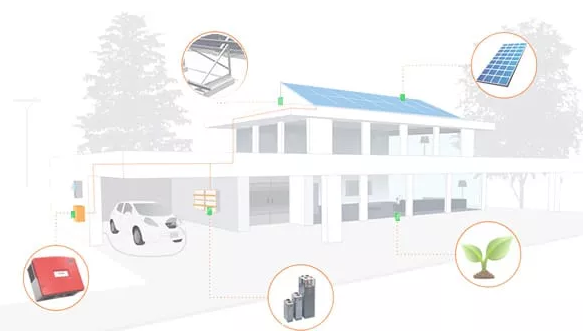
Typical diagram of a photovoltaic self-consumption installation in a house
What is grid-connected photovoltaic self-consumption?
As we described in point 2, basically a grid-connected self-consumption installation consists of solar panels, wiring, a photovoltaic inverter and a zero injection device (optional).
Solar panels are responsible for generating electrical energy from the solar radiation that falls on them, the inverter converts that electrical energy from direct to alternating to make it suitable for the consumption of electrical equipment and the wiring, logically, connects the photovoltaic equipment.
The zero injection device , for excess solar energy, is optional, and its purpose is to avoid dumping energy into the electricity grid.
How do you connect?
Fundamentally, and without entering into electrical specifications that would be the work of an electrical installer, the inverter output would be connected to the ICP input of our home and depending on the energy demand that our house has, the energy will be taken from the fotovoltaica. installation and from the network, in this order.
That is, since the solar self-consumption installation is the electrical generation system closest to our consumption, our home will always take energy from that closest source first, and if it needs more it will take it from the network, this will never mean power cuts, that is, the two generations go in parallel. It is a fundamental principle of electricity.
Types of self-consumption
Self-consumption without excesses:
Self-consumption without grid injection (without surplus): Those self-consumption facilities without grid injection, which cannot discharge surpluses into the grid, so they must install an anti-diversion system. Only the consumer subject will exist. In this case, the consumer has to be the owner of the generation installation.
Self-consumption with Surpluses (with discharge to the network):
Self-consumption with surpluses: They can pour surpluses into the network. There will be the consumer subject and the producer subject. According to the treatment given to surpluses, self-consumption with surpluses is divided into:
- a) Self-consumption with surpluses receiving compensation: When the consumer and producer choose to benefit from surplus compensation. This option will be ONLY possible when the following four cases are met:
- Production Power <100 kW
- When it is necessary to make a supply contract for Auxiliary Production Services, the consumer has a joint contract with a marketer for consumption and consumption of auxiliary production services. In order to have this joint contract, certain conditions must be given that are explained later (*)
- They take advantage of the contract for self-consumption surplus compensation or net balance.
- There is no additional or specific remuneration scheme.
- b) Self-consumption with surpluses NOT eligible for compensation: When they do not meet the criteria of a), or voluntarily do not want to use this modality. In this case, you will receive the corresponding economic compensation for the surplus hourly electrical energy discharged.
In addition, electrical self-consumption facilities may be classified as:
-
- Individual self-consumption: a consumer associated with a production facility.
- Shared self-consumption (collective): several consumers associated with production facilities. In this case, all participating consumers must belong to the same mode of self-consumption and must communicate individually to the distribution company directly or through the marketing company, the same agreement signed by all participants that includes the distribution criteria, which will be explained later. In turn, all self-consumption facilities may be defined as facilities close to the network or close to the internal network : -> Production facility close to and associated with consumption facilities:
- For the first, “Upcoming through the Network”
- Consumers who are located in the same cadastral reference according to their first 14 digits or, where appropriate, according to the provisions of the twentieth additional provision of Royal Decree 413/2014.
- Consumers that are connected in BT and at a distance of less than 500 m. To determine this distance, the distance between the measuring equipment in its orthogonal plan projection will be considered.
- Consumers connected to the LV network derived from the same transformation center For the latter, “Next from the internal network”:
- Self-consumption facilities that are connected to internal networks or connected by direct lines .-> If the installation is “close to the internal and collective network”, it may be with surpluses or without surpluses
-> If the installation is “close to the network “, the collective self-consumption can only belong with surpluses.
- Auxiliary Production Services (SAP) may be considered negligible and, therefore, it will not be necessary to enter into a supply and access contract for them when:
- Installation is close to indoor network
- Installation power <100 kW
- Energy consumed by said auxiliary production services is less than 1% of the net energy generated by the installation. (*) When the Auxiliary Production Services are not negligible (explained below), a joint supply and supply contract may be carried out. of access to that of the associated consumer when:
- The production facilities are connected to the consumer’s internal network.
- The consumer and the owners of the production facilities are the same natural or legal person.
- Connection and access procedure in self-consumption modalities As determined in RDL 15/18, these would be:
- Self-consumption without surpluses: They only need an access and connection permit for their consumption facilities.
- Self-consumption with surpluses, of P≤15 kW on urbanized land: They only need an access and connection permit for their consumption facilities.
- Self-consumption with surpluses that do not meet the previous condition: they must have an access and connection permit for their consumption facilities and also for each of their production facilities close to and associated with those of consumption (facilities close to the network or through the network) of which they are holders. For shared self-consumption facilities, the owners must attach in the request for access and connection when appropriate (when they are with surpluses greater than 15 kW on undeveloped land), a letter where the authorization of the property owners is accredited.
- Access contracts in self-consumption modalities: In general, consumers must notify the distributor, directly or through the marketer, of the self-consumption modality to which they are availing themselves so that they can modify the existing access contract ex officio.
- In the case of low voltage generation facilities, and consumers connected in LV with P <100 kW, this modification of the contract will be carried out by the distributor, with the documentation indicated by the CCAA to the company, with the following deadlines:
- In the case of self-consumption facilities with surpluses not eligible for compensation and whose SAP is not negligible, the owner of each production facility will have to sign an access contract, or modify the existing one, for auxiliary production services, directly or through the marketer.
- A joint access contract may be made for the SAPs and the associated consumer when the characteristics defined above are met.
-
- Energy supply contracts in self-consumption modalities. The supply contracts with the trading company must reflect the self-consumption modality to which it is covered. Thus, the distribution company must notify the marketer within 5 business days from which date the self-consumption modality to which the consumer has availed begins to be effective.
- The installation of accumulation systems is allowed in all self-consumption facilities, with the protections that apply to them. They will be installed in such a way that they share the meter that records the net generation, the boundary point meter or the associated consumer meter.
- Electrical diagram of meters:
- In general, all modes of self-consumption require a counter at the bidirectional border point:

- In addition, those that:
- Be collective self-consumption
- Be nearby facilities across the network
- In self-consumption with surpluses not eligible for compensation, there is no single supply contract for auxiliary production services.
- Installations generating nominal apparent power equal to or greater than 12 MVA.

Generation Counter Electrical Scheme for Self-consumption Modalities
- For self-consumption with surpluses not covered by compensation, they can optionally avail themselves of the following measurement configuration:
- Bidirectional measurement equipment that records net generation
- Measurement equipment that records the total energy consumed by the associated consumer

Electrical Scheme Counters for Self-consumption with surpluses without compensation
- In general, all modes of self-consumption require a counter at the bidirectional border point:
- Regarding the simplified compensation mechanism for surpluses , it will be carried out in economic terms of energy consumed, between the consumption deficits and the surpluses produced in a month. It is net billing, not net balance.
The value of the energy price will depend on whether the supplier of the supply contract is free or of reference. For which, a self-consumption surplus compensation contract must be signed that must be sent to the distribution company. - Regarding the registry, which must be telematic, declarative, public and free access, in which there will be two sections, self-consumption without and with surpluses. For self-consumers connected to BT in consumption and production, and with power less than 100 kW, the registration will be ex officio by the Autonomous Communities from the REBT. On a monthly basis, the CCAA will notify the Directorate General. of Politicas y Minas the highs and lows produced.
- For the adaptation of the subjects covered by the self-consumption modality existing in Royal Decree 900/2015, within six months from the approval of this RD, they must notify the competent body in energy matters of their community or autonomous city of the self-consumption modality to which they take refuge.
In addition, and as an exceptional measure, for one year, for those subjects who are under some form of self-consumption defined in RD 900/2015, the time of stay defined in article 8 will not apply, that is, permanence one year to carry out the first change of self-consumption modality that they carry out from the adaptation to one of the modalities included in this RD to another change of modality also defined in this RD.
With the modification of RD 1699/2011, single-phase generation facilities can be connected to the grid up to a nominal power of 15 kW. - For collective self-consumption, distributions of self-consumed energy based on a constant coefficient, by mutual agreement or based on the powers contracted by each consumer. However, the fifth Final Provision establishes that the Minister may modify the energy distribution system in a collective self-consumption or through the network, allowing the implementation of dynamic distribution coefficients. However, no deadlines are established for this.
What are the advantages of solar self-consumption?
There are probably many more but the use of solar panels for home , companies, industry etc … has some of these advantages that we detail:
- It allows the consumer to obtain economic savings and energy savings with a small investment. It is important to design the self-consumption project so that it adjusts as much as possible to the energy demand of the property, that is, everything that is generated must be consumed instantly.
- The energy system acquires greater efficiency thanks to distributed generation, which allows energy savings of not less than 10%, by avoiding losses due to transport, since the energy is produced closer to the consumption points.
- It allows a greater use of renewable energies and in this case, the saving of CO2 emissions into the atmosphere.
- It reduces the consumption of fossil fuels and the high energy dependence of Spain with the outside.
- There is no cost to the electrical system.
- It reactivates the economic and industrial activity associated with the energy sector and increases the competitiveness of companies.
- And also, from an investment and local savings, the entire Society will benefit.
Final summary:
What if you want to put solar panels in your house?
Well, the first news is that if you want to buy solar panels for photovoltaic self-consumption to put them on the roof of a house, you can do it now and you will no longer have to pay the “sun tax” that has been talked about so much. Seen this, you have two modalities :
- Self-consumption without surplus: The most normal thing is that with your installation you produce more energy than you consume. It is not something strange because it is not always easy to adjust the consumption of the house to the hours of sunshine. When this happens, In this mode, you give up pouring that excess energy into the grid, generally through a “zero injection kit”.
- Self-consumption with surpluses: In this case, that energy that “is left over”, you pour into the grid and, in return, you will receive compensation for it in the form of savings on your bill at the end of the month.
How is the compensation in self-consumption with surpluses?
Very simple, it is an energy saving on your monthly bill . In your electricity bill, the negative balance will be deducted from the amount saved by the electricity discharged. This is called ” simplified compensation .”
But beware, the simplified compensation is not designed so that you receive money for that energy. As we say, it is an energy saver and you will not receive money for this . The Ministry of Ecological Transition in its summary on self-consumption , says it clearly:
“The top of the compensation is the energy consumed, if you are going to sell more than you consume, you will have to register as a producer, because you have income. This regulation is designed to facilitate saving money in consumption.”
Is any electricity marketer suitable for self-consumption?
Yes, self-consumption can be exercised with any type of marketer, that is, the type of compensation will depend on the marketer with which the electricity is contracted. The Royal Decree differentiates between regulated marketers, which to get an idea are the great electricity companies of all life; and those of free market, that is to say, the new arisen, much smaller.
In the former, savings are calculated based on the price of electricity in the wholesale electricity market; however, in those of the free market, this price being the same reference, it will be a contract between the parties.
How much can be the energy savings for a home?
It is very difficult to give a figure why for self-consumption installation it depends a lot on each type of home and each consumption profile. But if we look for an approximate figure, we can say that an installation of solar panels for housing for self-consumption can be amortized between 8 and 10 years, depending on its size, location, quality of the equipment, etc. This figure may even be lower if we enjoy a subsidy or aid
Is self-consumption allowed if you live in a neighborhood community?
Yes, electricity self-consumption for neighboring communities is allowed and is called shared self-consumption and for this option a form of compensation has been chosen that provides for a distribution of savings among the neighbors called “static”, that is, each one has a electricity production and you are compensated for it, calculated by the hour.
This has a great advantage, because, as we mentioned in the previous point, one of the factors that positively affects amortization is the size of the installation, the larger the size, the lower the price per installed watt, and therefore, the amortization will be earlier. .
Can you install solar panels for self-consumption on the roof of another building?
The Ministry of Ecological Transition says YES, but with a maximum distance of 500 meters from the facility.
“Self-consumption is what is close, in urban environments, it is about not being abused and this becomes a drain to build a solar macropark and benefit from compensation . “
Is the power of your self-consumption installation important?
Yes, it is, in fact the Royal Decree marks differences depending on the power of the installation.
- Installations of up to 15 kilowatts: exempt from processing a connection point to the grid with the electricity companies .
- Installations from 15 to 100 kilowatts: it is necessary to request a connection point with the distribution company, which entails a cost.
- Installations from 100 kilowatts: it is no longer considered self-consumption, having to be registered by the owner as an electricity producer.
For all of them there are always equipment and solutions on the market. Both solar panels and inverters ( Fronius type inverters ) and other elements.
How do I measure the energy I produce and the energy I consume?
It will be through a bidirectional meter, which will show the amount produced by the photovoltaic panels and what we have consumed from the network.

